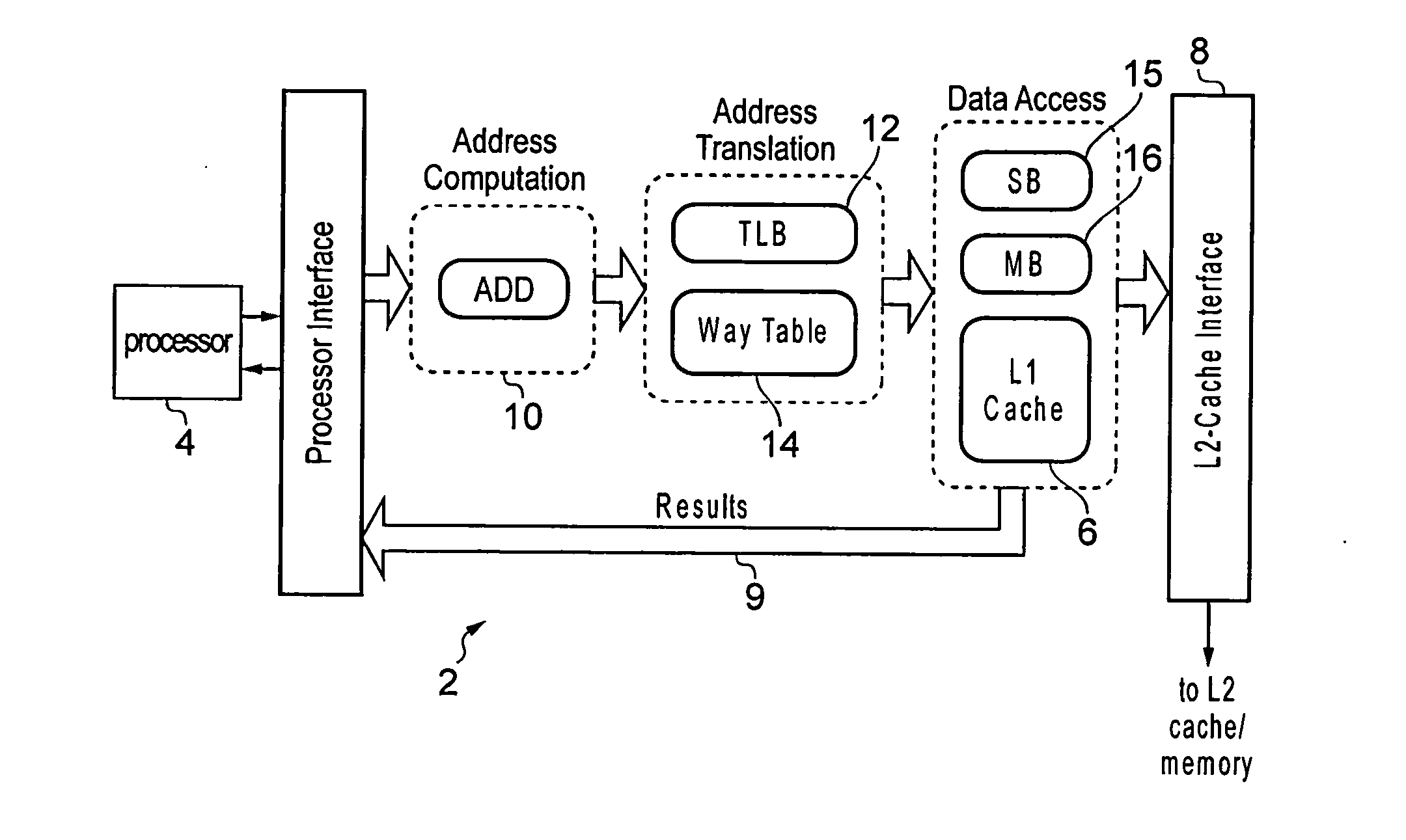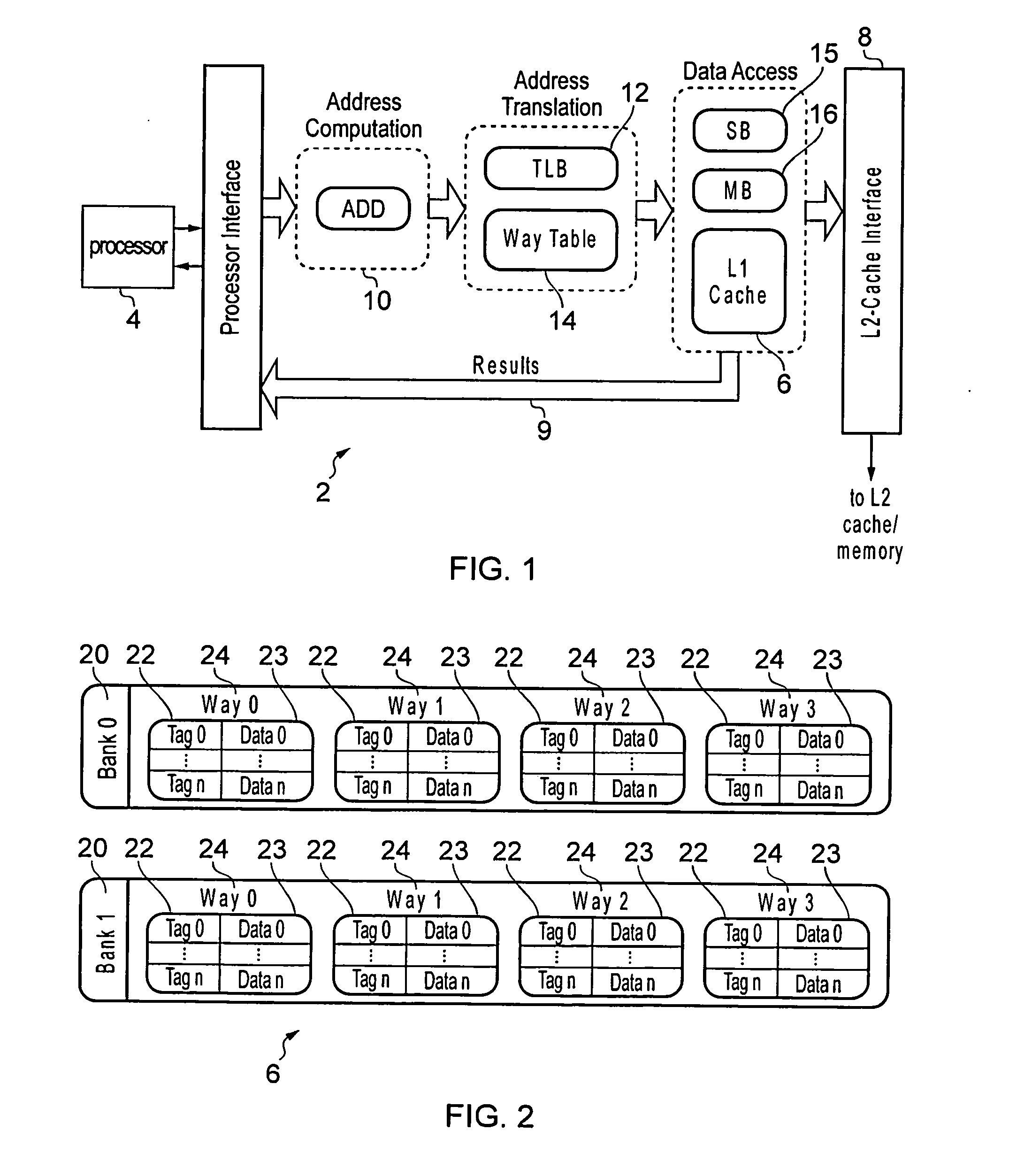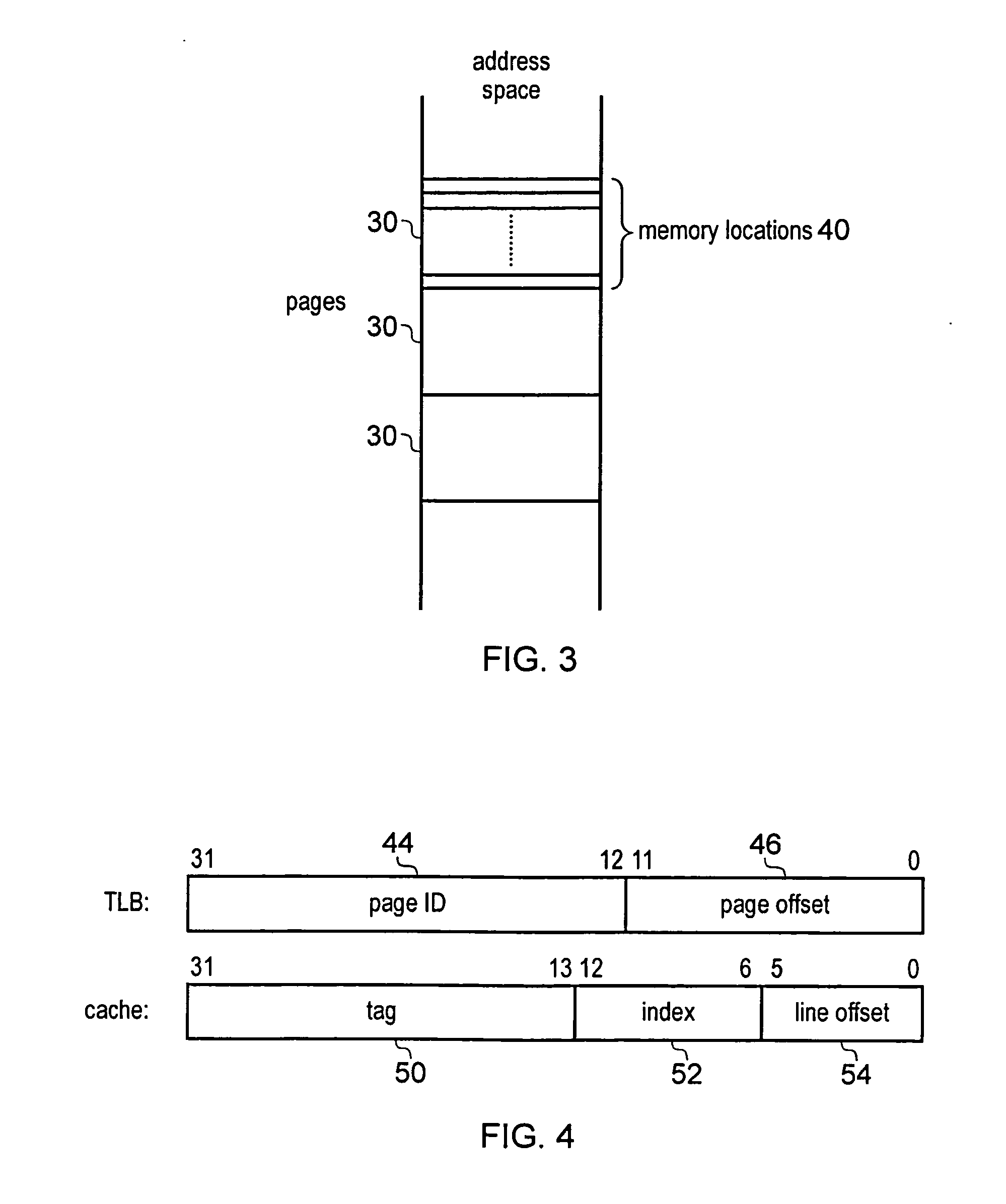Data processing apparatus having cache and translation lookaside buffer
a data processing apparatus and cache technology, applied in the field of data processing, can solve the problems of increasing the energy efficiency of the memory subsystem, exacerbate the problem, and increase the cost of processing, so as to achieve the effect of efficient system accessing the cache and facilitating copy operations
- Summary
- Abstract
- Description
- Claims
- Application Information
AI Technical Summary
Benefits of technology
Problems solved by technology
Method used
Image
Examples
Embodiment Construction
[0115]FIG. 1 schematically illustrates a data processing apparatus 2 comprising a processor 4 for processing data. A cache 6 is provided for storing data on behalf of the processor 4. The cache 6 is a level 1 (L1) cache which is a member of a cache hierarchy including at least one further level cache (the L2 cache). The L1 cache 6 communicates with the L2 cache and with a memory (not shown in FIG. 1) via an L2-cache interface 8. If data required by the processor 4 is not present in the L1 cache 6, then the L1 cache 6 requests the data from the L2 cache or the memory and allocates the data to a line of the cache 6. A cache coherency policy (e.g. write-back or write-through policy) may be used to maintain coherency of data in the L1 cache 6, L2 cache and memory. A bus 9 is provided for returning results of serviced cache accesses to the processor 4.
[0116]The processor 4 may issue data access requests for accessing data from the cache 6. An address computation stage 10 is provided for ...
PUM
 Login to View More
Login to View More Abstract
Description
Claims
Application Information
 Login to View More
Login to View More - R&D
- Intellectual Property
- Life Sciences
- Materials
- Tech Scout
- Unparalleled Data Quality
- Higher Quality Content
- 60% Fewer Hallucinations
Browse by: Latest US Patents, China's latest patents, Technical Efficacy Thesaurus, Application Domain, Technology Topic, Popular Technical Reports.
© 2025 PatSnap. All rights reserved.Legal|Privacy policy|Modern Slavery Act Transparency Statement|Sitemap|About US| Contact US: help@patsnap.com



